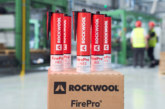
The Building Safety Act 2023 requires that some 12,500 higher-risk buildings (HRBs) are to be assessed over 2024 to 2029 to inform a safety case about how fire and structural safety risks are managed. With an additional 2,000 HRBs being constructed each year, this five-year process makes for a considerable workload. To help building assessors with this significant assignment, the Institution of Structural Engineers (IStructE) is releasing new guidance – Assessing higher-risk buildings under the Building Safety Act: a compendium of structural typologies.
The Building Safety Act defines a HRB as a development of at least seven storeys or 18 metres high, containing at least two residential units. This compendium details 16 common HRB typologies. The guide focuses on UK buildings constructed or adapted between 1920 and 2020, with a description, a schedule of applicable building codes at the time of construction, and possible defects and other issues to be aware of. The guide therefore assists in assessing compliance with codes at time of construction and assessment of structural safety as required by the Act Reinforced Autoclaved Aerated Concrete (RAAC) is covered in the Compendium, which is especially relevant and important given the recent prevalence of RAAC-related issues reported in schools, hospitals, and other public buildings









